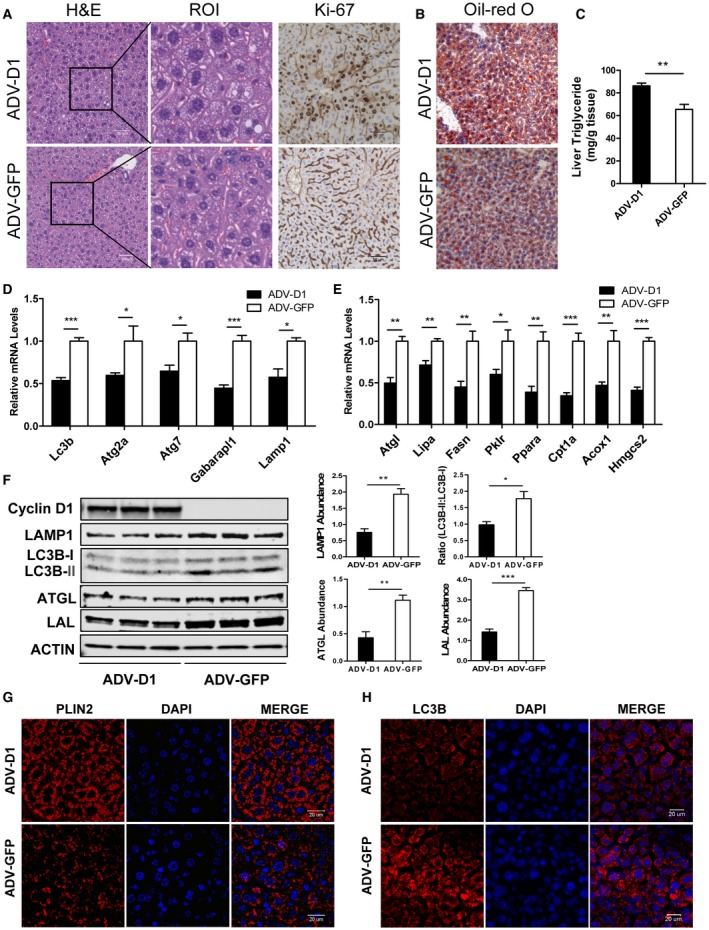Figure 5.

Cyclin D1 promotes LD accumulation and decreases autophagy induced by fasting in mice. BALB/c mice were transduced with a control or cyclin D1‐expressing ADV for 24 hours before harvest. They were fasted for the final 20 hours before harvest (n = 6 per group). (A) H&E staining and Ki‐67 immunohistochemistry of livers excised from two groups of mice. The ROIs are enlarged as shown. Mice expressing cyclin D1 had numerous Ki‐67‐positive hepatocyte nuclei (there is nonspecific staining in the sinusoids), whereas none were seen with the control vector. Scale bars, 50 µm. (B) Oil Red O staining in fasted mice injected with ADV‐D1 or ADV‐GFP. Cyclin D1‐transduced mice had increased LD staining with Oil Red O. (C) Hepatic triglycerides of these two groups were measured as described in Materials and Methods. (D) Expression of autophagy‐related mRNA transcripts in livers from the two groups of mice. (E) mRNA expression of lipolysis, lipogenesis, and fatty acid oxidation genes. (F) Expression of autophagy and lipolysis‐related proteins by western blot. The graphs show normalized expression of these proteins (n = 3). (G) Immunostaining of PLIN2 in liver sections. (H) Immunostaining of LC3B. Cyclin D1 induced LD accumulation (as delineated by PLIN2 staining) but reduced LC3B punctae, further indicating impaired autophagy. Data represent mean ± SEM; *P < 0.05; **P < 0.01; and ***P < 0.001. Abbreviations: Acox1, acyl‐coenzyme A oxidase 1; Cpt1α, carnitine palmitoyltransferase 1α; Fasn, fatty acid synthase; Gabarapl1, gamma‐aminobutyric acid receptor‐associated protein‐like 1; Hmgcs2, 3‐hydroxy‐3‐methylglutaryl‐coenzyme A synthase 2; Pklr, pyruvate kinase L/R.
